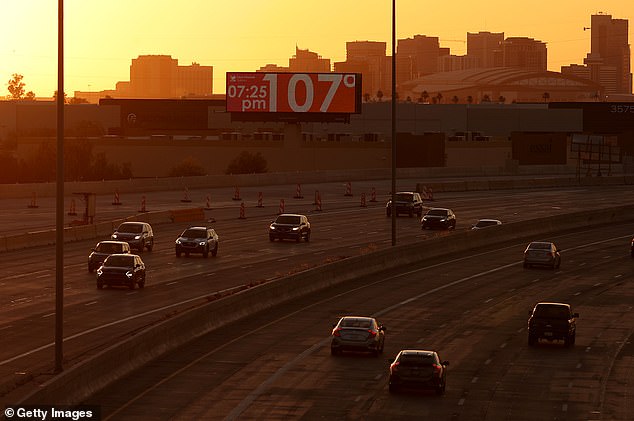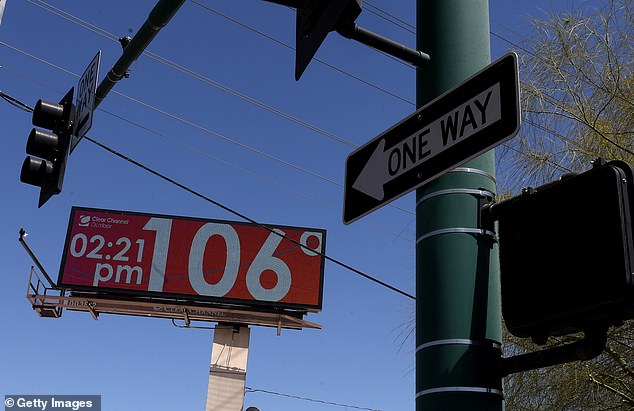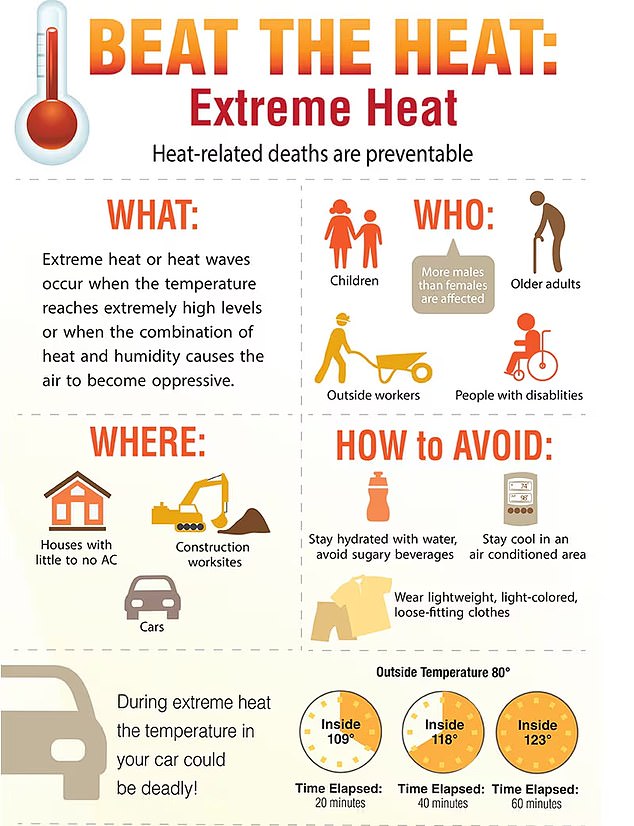Hottest ever June ‘heat dome’ weather will see hundreds of millions of Americans swelter through 100F heat – and temperatures won’t drop much at night
Hundreds of millions of Americans will be sweltering through 90-degree temperatures in the coming weeks in what is expected to be the hottest June on record.
A heat dome is expected to form in the east starting Sunday, stretching along the Mid-Atlantic and the Northeast.
About 260 million people will see temperatures reach or exceed 90 degrees, with some even exceeding 100 degrees.
The heat wave will affect major metropolitan areas, including New York City, Washington DC, Chicago, Boston and Hartford.
People are being warned to take the impending heatwave seriously and stay cool as temperatures will not drop much at night.
Hundreds of millions of Americans will spend the next few weeks sweltering through 90-degree weather in what is expected to be the hottest June on record
The heat wave, which will begin in the coming days, will spread from the Northeast into the Midwest and the Ohio Valley.
In Northern Maine, which should only just experience warmer weather, temperatures will likely rise above 90 degrees.
The center of the heat dome will likely move from the southern Great Lakes region to the northern Mid-Atlantic and then to New England.
Washington is expected to have highs around 95 degrees between Monday and Friday next week.
While the National Weather Service predicts the heat wave will peak at 96 degrees in Chicago on Monday.

A heat dome is expected to form in the east starting Sunday, stretching along the Mid-Atlantic and the Northeast

About 260 million people will see temperatures reach or exceed 90 degrees, with some even exceeding 100 degrees. Pictured: A woman being treated for heat exhaustion in Arizona
But Boston will see highs of 95 degrees later in the week and the Mid-Atlantic and Northeast could see temperatures above 100 degrees.
The heat wave causes weather conditions that are about 10 to 20 degrees above average for this time of year.
A heat dome is created when hot sea air becomes trapped in the atmosphere, much like putting a lid on a boiling pot.
The hot air expands through the atmosphere, creating a dome-like structure that prevents cooler air from circulating, blocks clouds and rain, and can increase the risk of wildfires.
Extreme heat kills more people in the U.S. than any other weather pattern, causing the deaths of 1,220 Americans every year, according to the Centers for Disease Control and Prevention.
It only takes 10 to 15 minutes for your body to overheat, and if it can’t cool down immediately, it can lead to muscle cramps or spasms, dizziness, nausea and vomiting, headaches and death.

The heat wave will affect cities such as New York City, Washington DC, Chicago, Boston and Hartford

People are being warned to take the heatwave seriously and stay cool as temperatures will not drop much at night
The National Weather Service will likely issue heat alerts and warnings early next week.
The agency had to go all the way back to 1994 to find a similar extreme heat wave that hit the same area.
“While some pattern details are of course different, the axis of the largest temperature anomalies in the current forecast bears some similarity to the 1994 heat wave observed around the same time in June,” the report said Friday.
Experts are concerned that heat domes will also cause major droughts after previously affecting 80 percent of southern Mexico, where temperatures reached 118 degrees Fahrenheit.
The extreme heat is caused by greenhouse gases from the combustion of fossil fuels such as oil, gas and coal.
